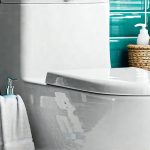Bladder irritation can be a surprisingly disruptive force in maintaining a consistent fitness routine. For many, the discomfort – ranging from urgent need to frequent trips to the bathroom – isn’t triggered by lack of strength or stamina, but rather by the physical stress placed on the pelvic floor during exercise. This often leads individuals to reduce their activity levels, fearing unwanted symptoms and potentially creating a cycle of deconditioning. However, it is possible to stay active and even improve your fitness while minimizing bladder irritation; it simply requires mindful adjustments and a deeper understanding of how different exercises impact your body.
This isn’t about giving up on your health goals – far from it! It’s about finding sustainable ways to move that respect your body’s individual needs. Whether you experience mild discomfort or more significant urgency, there are strategies to modify your routine without sacrificing the benefits of physical activity. This article will explore practical adjustments you can make, focusing on exercise selection, intensity management, and preventative measures to help you stay fit and comfortable. We’ll also address how understanding your pelvic floor is crucial for long-term success.
Understanding the Connection: Exercise & Bladder Irritation
The relationship between exercise and bladder irritation stems primarily from increased intra-abdominal pressure. Exercises that significantly raise this pressure, such as high-impact activities like running, jumping, or heavy lifting, can put a strain on the pelvic floor muscles – the group of muscles responsible for supporting your bladder, uterus (in women), and rectum. When these muscles are weakened or overloaded, they may not be able to adequately control urine flow, leading to stress incontinence or feelings of urgency. It’s important to remember that this isn’t necessarily a sign of weakness; sometimes it indicates overuse of the pelvic floor – meaning the muscles are fatigued and need support. If you suspect your bladder is inflamed, consider learning how to tell if that’s the case.
Beyond high-impact exercises, even seemingly innocuous activities can contribute if they involve repetitive strain on the pelvic floor. Consider core work: while essential for overall strength and stability, certain abdominal exercises (like crunches) can actually increase intra-abdominal pressure without adequately engaging the supporting pelvic floor muscles. This imbalance can exacerbate symptoms. Furthermore, dehydration during exercise concentrates urine, making it more irritating to the bladder lining. Finally, the type of clothing you wear matters too – restrictive garments can also contribute to increased pressure.
Adapting Your Routine: Minimizing Irritation & Maximizing Fitness
The good news is that adapting your fitness routine doesn’t mean eliminating activities you enjoy. It’s about making informed choices and incorporating modifications. Start by identifying which exercises trigger your symptoms. Keep a log if necessary, noting the type of activity, intensity level, and any associated discomfort. This will help pinpoint problem areas. From there, explore alternatives that minimize stress on the pelvic floor. For example, swapping running for swimming or cycling can significantly reduce impact. Similarly, replacing crunches with Pilates-based core exercises that emphasize pelvic floor engagement provides a more supportive approach.
Consider modifying intensity and duration as well. Reducing the number of repetitions, shortening workout sessions, or decreasing weight lifted can all lessen strain. Gradual progression is key – don’t try to do too much too soon. Focus on quality over quantity, ensuring proper form throughout each exercise. Don’t be afraid to rest when you need to! Listening to your body and respecting its limits is paramount. Finally, prioritize hydration before, during, and after exercise to dilute urine and minimize bladder irritation.
Pelvic Floor Strengthening & Awareness
A strong pelvic floor isn’t just about preventing incontinence; it’s about providing a stable foundation for all movement. However, how you strengthen your pelvic floor matters. Traditional Kegel exercises (repeatedly contracting and relaxing the pelvic floor muscles) can be helpful, but they aren’t always sufficient. Many people perform Kegels incorrectly, leading to tension rather than strength. A more holistic approach involves learning to coordinate pelvic floor activation with your breathing and core engagement.
- Diaphragmatic Breathing: Practice deep, belly breaths, feeling your diaphragm expand downwards and your pelvic floor gently release on the inhale, and subtly lift on the exhale. This establishes a mind-body connection crucial for proper pelvic floor function.
- Functional Exercises: Integrate pelvic floor activation into everyday movements like squats or lunges. Imagine drawing in your abdominal muscles and gently lifting upwards from your pelvic floor as you perform these exercises.
- Professional Guidance: Consider consulting with a physical therapist specializing in pelvic health. They can assess your individual needs, teach you proper techniques, and create a personalized exercise program. If recovery is needed after infection, learn how to help your bladder recover.
Hydration & Dietary Considerations
Staying adequately hydrated is crucial for bladder health and overall performance. Dehydration concentrates urine, making it more irritating to the bladder lining. Aim to drink water consistently throughout the day, especially before, during, and after exercise. Avoid excessive caffeine and alcohol consumption, as these are diuretics that can increase urinary frequency. Pay attention to your diet as well – certain foods and beverages (such as citrus fruits, spicy foods, and artificial sweeteners) can also irritate the bladder in some individuals. Knowing how to avoid irritants is important for women.
- Fluid Intake: Monitor your urine color – pale yellow indicates adequate hydration.
- Dietary Log: Keep track of what you eat and drink to identify potential triggers for bladder irritation.
- Strategic Timing: Drink fluids gradually throughout the day rather than large amounts at once.
Exercise Modifications & Alternatives
Finding appropriate exercise alternatives is key to maintaining fitness without exacerbating bladder symptoms. For those accustomed to high-impact activities, consider low-impact options like swimming, cycling, or elliptical training. These provide excellent cardiovascular benefits with minimal stress on the pelvic floor. When it comes to core work, prioritize exercises that engage the deep abdominal muscles and pelvic floor without increasing intra-abdominal pressure. Pilates and yoga are excellent choices, but be mindful of modifications if certain poses trigger symptoms. It’s also important to understand how to tell if your bladder is fully emptying.
- Running → Swimming/Cycling: Reduce impact dramatically while maintaining cardiovascular fitness.
- Crunches → Pilates/Yoga: Focus on core engagement with pelvic floor support instead of forceful abdominal contractions.
- Heavy Lifting → Lighter Weights/Higher Reps: Decrease strain by reducing weight and increasing repetitions, focusing on proper form.
Ultimately, managing bladder irritation during exercise is about finding a sustainable balance between activity and comfort. It requires self-awareness, mindful adjustments, and a willingness to explore different options. Don’t hesitate to seek guidance from healthcare professionals – a physical therapist specializing in pelvic health can provide invaluable support and help you create a personalized fitness plan that meets your individual needs. Remember, staying active is essential for overall well-being, and it is possible to do so without sacrificing bladder comfort. If you work in an office setting, avoid irritation at work can help too!





















